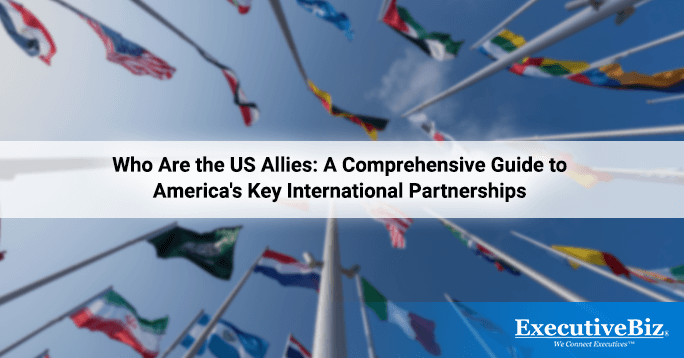Who are the U.S. allies?
Throughout history, the United States has joined forces with other countries to work toward shared objectives and safeguard core values. These foreign relations play a role in shaping America’s foreign policy and maintaining national security.
Recently, the U.S. has highlighted its commitment to alliance partners by recognizing their strides in strengthening defense investments. Here, we have listed all the significant U.S. allies that the country has cultivated worldwide.
Learn more about how the U.S. collaborates with global allies and partners at the 2024 GovCon International Summit hosted by the Potomac Officers Club on Oct. 10. Government, military and industry leaders from all over the world will gather to share their insights at this first-of-its-kind event. Register for the GovCon International Summit to save your seat.
Who are the US Allies: U.S. History of Partnerships
The U.S. and its allies have an organization called NATO, an organization that was established in 1949, when the world was getting back on its feet after WWII. Currently, NATO has 31 member countries, and they’re called NATO allies.
These countries join forces through NATO to have important discussions about global politics and security, and they make decisions together through agreements. The U.S. is a big believer in the power of consultation within NATO and the advantages of having crucial discussions with its allies.
Belgium
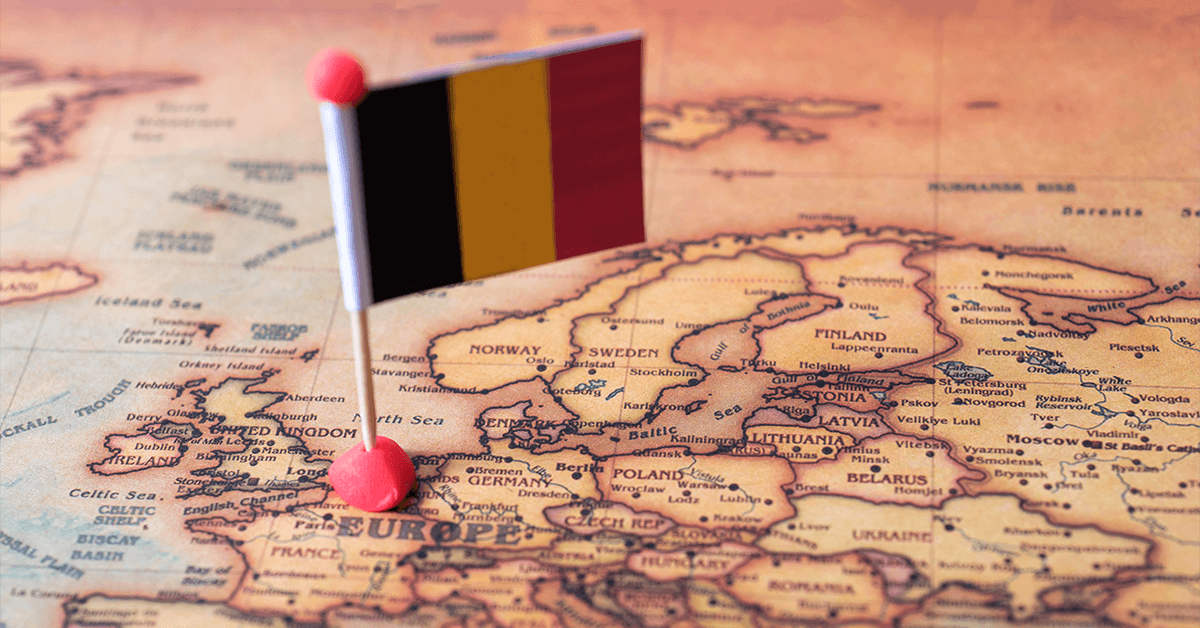
Belgium has been a NATO member since it was founded in 1949. It was one of the 14 countries that founded NATO, along with the United States, Canada, the United Kingdom and France, among others. The country’s strong support for the treaty can be understood through its history during World War I and II.
During these wars, Belgium was occupied by Germany and has suffered greatly. This experience made Belgium realize the importance of having a defensive alliance. So, after World War II ended and Belgium was liberated, it actively called for the creation of NATO.
Belgium is a key player in European and Transatlantic diplomacy because it hosts the headquarters of NATO and the European Union (EU) in Brussels.
Belgium’s partnership with the U.S.
Belgium and the U.S. have been close allies since 1832. This was when the U.S. established diplomatic relations with Belgium after declaring its independence from the Netherlands in 1830.
The relationship is evident on their shared democratic ideals, values and economic matters. Belgium and the U.S. are close partners and work together on various foreign policy issues. Not only that, the U.S. is the biggest importer of Belgian goods outside the European Union, which shows the strong economic ties between the two countries.
Canada

Canada has been a member of NATO since its inception. It was one of the first countries to formulate the idea. The Canadian Armed Forces are highly active and have participated in almost all of its operations since then. NATO plays a role in international peace and security, and it plays a significant part in the country’s defense policy.
Canada focuses on making sure the treaty organization stays up-to-date, adaptable and ready to handle present and future challenges. In addition, it has recently made efforts to demonstrate its commitment to the alliance visibly, and its defense budget is one of the largest among NATO members.
Canada’s partnership with the U.S.
Canada and the U.S. have a close partnership within NATO, with collective defense commitments. They collaborate on security issues supporting Ukrainian forces and are partners in NORAD, their military alliance against any air sovereignty threat.
They have also built the world’s largest market-based energy trading relationship, where the U.S. is the largest source of foreign direct investment into Canada, and Canada is the second-largest source of foreign direct investment into the United States.
Denmark
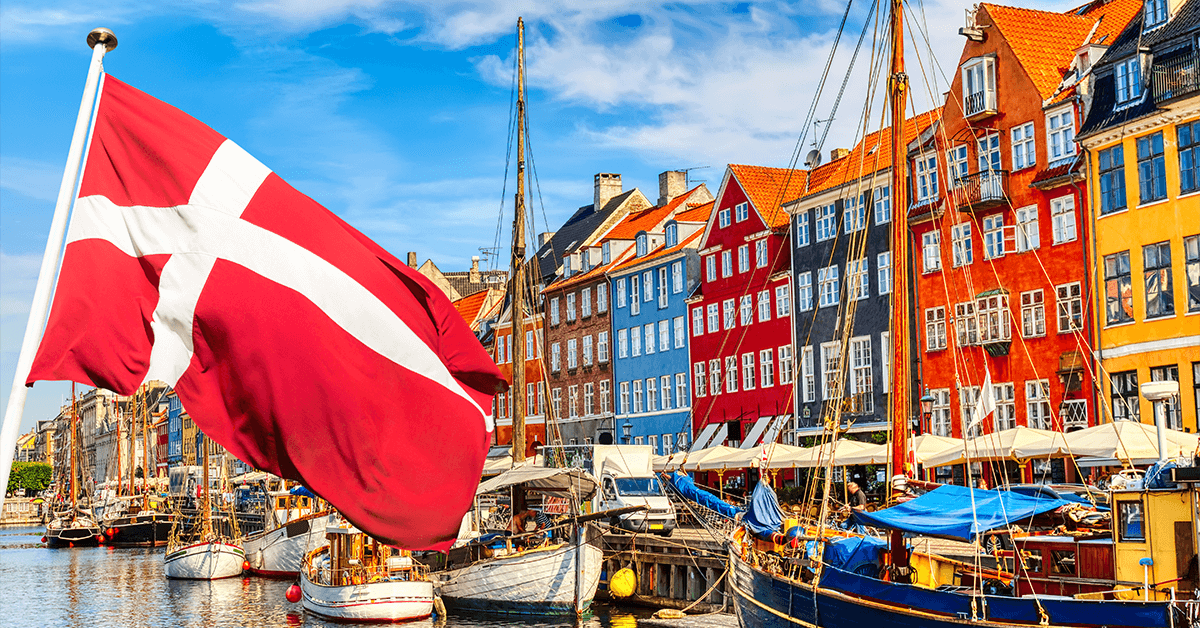
Denmark became a founding member of NATO in April 1949, along with 11 other nations. However, it decided to limit its involvement within the strategic partnership. These include not having permanent peacetime bases, not allowing nuclear warheads, and permitting allied military activity only when invited.
Denmark is also a part of the European Union’s defense policy and collaborates with Sweden, Norway and Finland to establish a unified Nordic air defense.
Denmark’s partnership with the U.S.
Denmark and the United States have long-standing and strong relationships. They closely consult on political and security matters in Europe and other regions to promote peace and stability beyond Europe’s borders. Denmark’s active trade policy in the European Union, Organization for Economic Cooperation and Development and World Trade Organization aligns with U.S. interests.
Copenhagen’s strategic location in the Baltic Sea entrance has become a hub for U.S. agencies and private sector engagement with the Nordic and Baltic regions. Denmark’s investment in the U.S. has increased, particularly in pharmaceuticals and wind energy.
France

France is one of the original 12 founding members of NATO. In the mid-60s to mid-90s, France pursued an independent military strategy known as “Gaullo-Mitterrandism,” which led to its departure from NATO’s integrated military structure in 1966. However, France remained a member of NATO.
In 2007, when Nicolas Sarkozy was elected President, significant reforms were implemented resulting in France’s full return to NATO membership in April 2009. This move included rejoining the NATO Military Command Structure while maintaining an independent nuclear deterrent. France is the sole NATO member outside the Nuclear Planning Group.
France’s partnership with the U.S.
France is the United States’ oldest and first ally. Their history of partnership dates back to the American Revolution when France provided key assistance to the United States as an ally during its War of Independence through the Treaty of Alliance.
Since 2000, the United States and France have worked together on various issues, such as trade, counterterrorism, and climate change. This nation is a part of the European Union and the United States’ third-largest trading partner in Europe. Relations improved since 2010, with American favorability ratings of France peaking at 87 percent in 2016.
Iceland

Iceland has been a NATO member since 1949, but it doesn’t have military forces. Instead, Iceland relies on surveillance and reconnaissance cooperation for its security. The country had a peaceful history even before becoming a Republic in 1944.
Iceland maintains a Coast Guard with a small fleet of ships and aircraft. These assets are equipped with weapons like small arms, naval artillery, and air defense radar stations. The Coast Guard also operates an air defense and surveillance system as part of NATO’s integrated Air Defense System, helping NATO allied air forces monitor the air space in Iceland and maintain its sovereignty.
Iceland participates in annual NATO exercises called Northern Viking. It also conducts “Northern Challenge” focused on explosive ordnance disposal.
Iceland’s partnership with the U.S.
Iceland is one of NATO’s founding members with a bilateral defense agreement with the U.S. They work together on global issues, human rights, economic development and controlling weapons. The U.S. is Iceland’s most prominent trading partner, primarily invested in Iceland’s aluminum sector.
In 2009, they signed the Trade and Investment Framework Agreement. They agreed to continue collaborating on energy security, renewable energy and finding environmentally friendly solutions to tackle the climate crisis.
Italy

Italy is a key part of NATO and helps it succeed with its military strength and political involvement. The country has been a member of NATO since it started in 1949. Its location in the Mediterranean makes securing the treaty’s southern side easier. Italy’s military has taken part in different NATO missions, such as leading air policing efforts within the Atlantic Alliance.
Italy’s partnership with the U.S.
The U.S. and Italy cooperate within the G-7. In 2019, their trade in goods and services was valued at $103 billion. They collaborate on issues related to drug trafficking, human trafficking and terrorism.
The U.S. and Italy aim to improve their relationships with Africa through equal partnership, and they recognize the importance of working with the public sector, United Nations partners, development banks and international financial institutions to support these efforts. They also reaffirmed their commitment to implementing policies against terrorism as part of the D-ISIS Coalition.
Luxembourg

Another founding member of NATO, Luxembourg has actively participated in numerous military exercises during the Cold War. To support the alliance, it constructed two large storage facilities to store supplies like combat vehicles, machinery, food, clothing, fuel and other equipment the allies required during wars.
In 2023, Luxembourg negotiated a special agreement with NATO that allows it to deviate from the requirement of spending two percent of its GDP on defense. This arrangement acknowledged Luxembourg’s specific circumstances when evaluating its defense spending.
Luxembourg’s partnership with the U.S.
The diplomatic relations between the U.S. and Luxembourg were initially established in 1903. The U.S. contributed to liberating Luxembourg during World War I and World War II in September 1944. More recently, they embarked on a new phase of collaboration in space within NATO. This collaboration has been exemplified by establishing GCC SATCOM SP, strengthening NATO’s capabilities.
As part of the bilateral trade, the U.S. exports goods to Luxembourg, including commercial aircraft and information and communications technology equipment. Additionally, Luxembourg purchases U.S. services and intellectual property, such as medical research and entertainment.
Netherlands
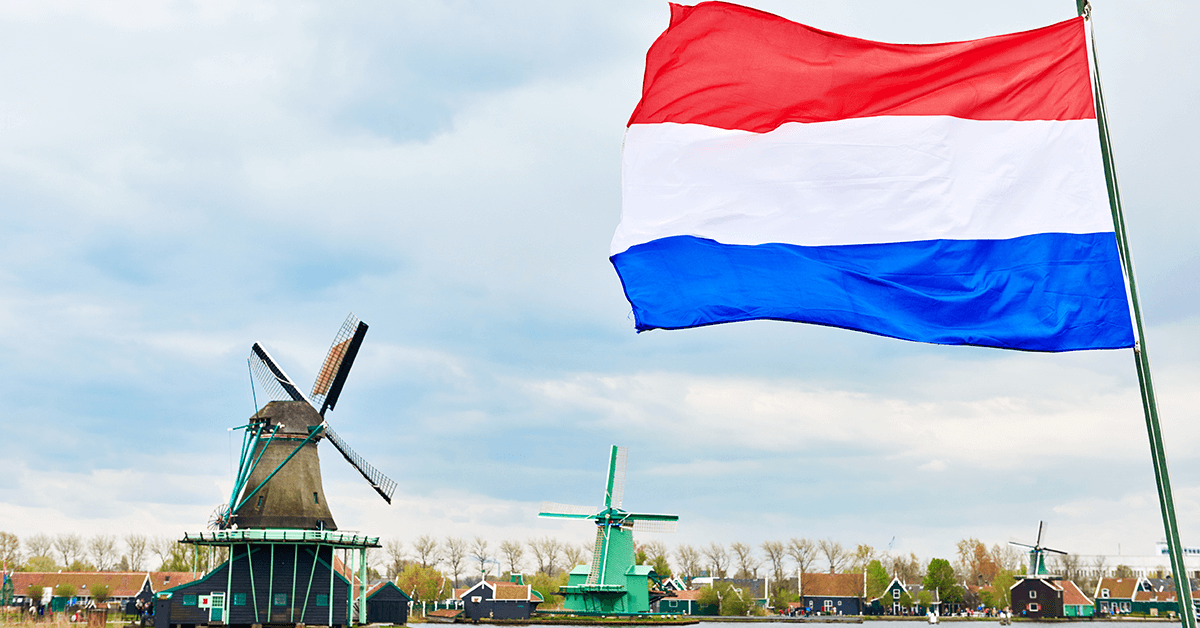
As a NATO founding member, The Netherlands helps the treaty’s defense efforts by sending fighter aircraft to patrol NATO airspace in Eastern Europe. It has around 250 military personnel stationed in Lithuania as part of NATO’s enhanced Forward Presence. The Netherlands emphasizes the importance of close cooperation between NATO and the European Union to identify security risks and address global challenges quickly.
Netherlands’ partnership with the U.S.
The U.S. and the Netherlands have a long history of partnership that dates back to the American Revolution. Their partnership is built on shared values of individual freedom, democracy, human rights and historical and cultural connections. They often align their positions on issues and collaborate bilaterally and multilaterally through international organizations like the United Nations and NATO.
After World War II, the Netherlands received financial assistance from the U.S. through the Mashall Plan, totaling $1.1 billion. This aid was significant for its post-war economic recovery, particularly in the coal and steel sectors. This contributed to the formation of the European Union.
Norway
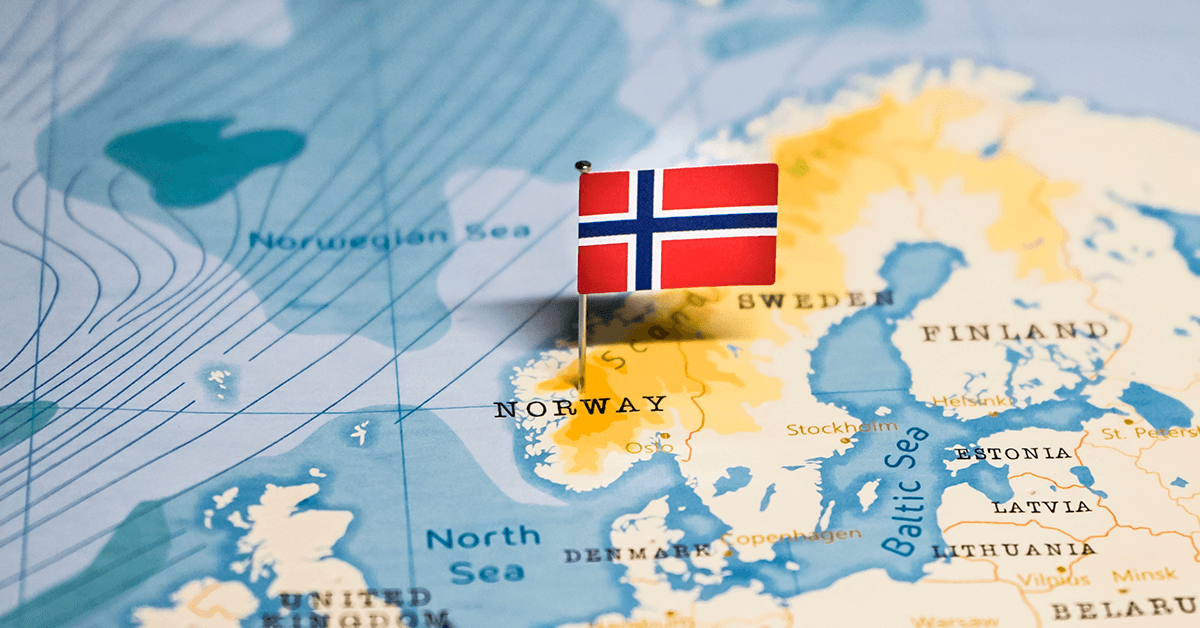
Norway is an active participant in NATO dating back to 1949. Its role includes hosting, especially during the Cold War and participating in exercises and operations with Allies and partners. This country is a valuable member of NATO for at least three main reasons: military training, NATO’s Northern Flank and monitoring Russian activities.
Norway protects critical undersea infrastructure vital to communications networks and energy security. It is the best destination for military training in harsh weather conditions, and it constitutes NATO’s forward outpost in the Far North (NATO’s Northern Flank).
Norway’s partnership with the U.S.
Norway and the U.S. started diplomatic relations in 1905 when it separated from Sweden. The two countries work together on security, economic, human rights and climate issues. In 2022, it signed an agreement to strengthen its defense cooperation.
Norway has supported Ukraine a lot, which received praise from the U.S. It also cooperates with international organizations and as part of the Arctic Council. Also, it was inspired by the American Constitution’s democratic ideas when it wrote its Constitution in 1814.
Portugal

Portugal is one of the founding members of NATO and as a member, Portugal defends the alliance as a whole. The country has air bases and ports that can quickly support allied military force initiatives.
One of the largest NATO bases in southern Europe, the Allied Joint Force Command Lisbon, was in Oeiras near Lisbon, Portugal, but was deactivated in 2012. Lisbon also houses the Naval Striking and Support Forces NATO Base (STRIKFORNATO).
Portugal’s partnership with the U.S.
Portugal and the U.S. work together in the United Nations, regional organizations, and through bilateral efforts to promote peace. Maintaining a close and positive relationship with the U.S. is a top priority in Portugal’s foreign policy, and the general public holds a favorable view of America.
The U.S. is Portugal’s largest trading partner outside the EU, with a bilateral trade in goods and services worth $8.9 billion in 2019. The U.S. Consulate in Ponta Delgada on the Island of Sao Miguel in the Azores is the world’s oldest continuously operating U.S. Consulate. The U.S. Air Force also hosts the European Partnership Flight program with Portugal.
Other U.S. allies:
- United Kingdom
- Greece
- Turkey
- Germany
- Spain
- Czech Republic
- Hungary
- Poland
- Bulgaria
- Estonia
- Latvia
- Lithuania
- Romania
- Slovakia
- Slovenia
- Croatia
- Montenegro
- North Macedonia
- Finland
FAQs
What are U.S. quasi-allies?
U.S. quasi-allies are countries that receive some level of political and military aid from the U.S., but the U.S. has no commitments to defending them. The relationship can be unclear and can leave leaders in these countries uncertain about the extent of U.S. assistance during challenging times.
The “major non-NATO allies (MNNAs)” is one category of U.S. quasi-allies. Despite the confusing name, MNNAs have certain benefits, such as eligibility to bid on contracts to service overseas U.S. forces, expedited approval for arms sales, and eligibility for joint research project loans. These countries are Bahrain, Egypt, Kuwait, Morocco, Pakistan, Qatar, Taiwan, Thailand and Tunisia.
How should the U.S. choose allies in the future?
The U.S. should avoid taking on additional long-term security investments beyond the many it already has. The U.S. military is already heavily engaged in Europe, the Middle East and Asia, and it would be strategically unwise to add more permanent security obligations. This is especially important now that the U.S. is facing complex global and economic constraints domestically.
In line with this, the U.S. should oppose any new permanent alliances that could drag it into future conflicts with nuclear-armed countries that would not align with its national interests, like Ukraine and Georgia near Russia.
To know more about government contracts and partners in GovCon, click here.


